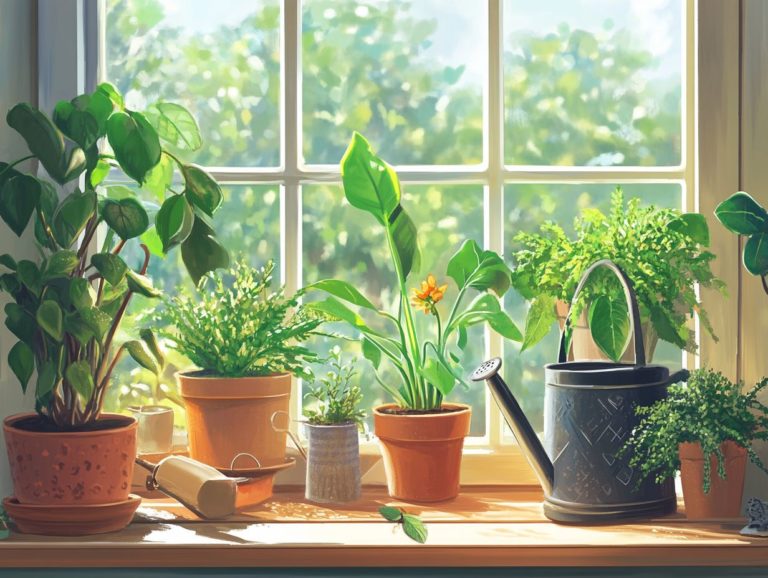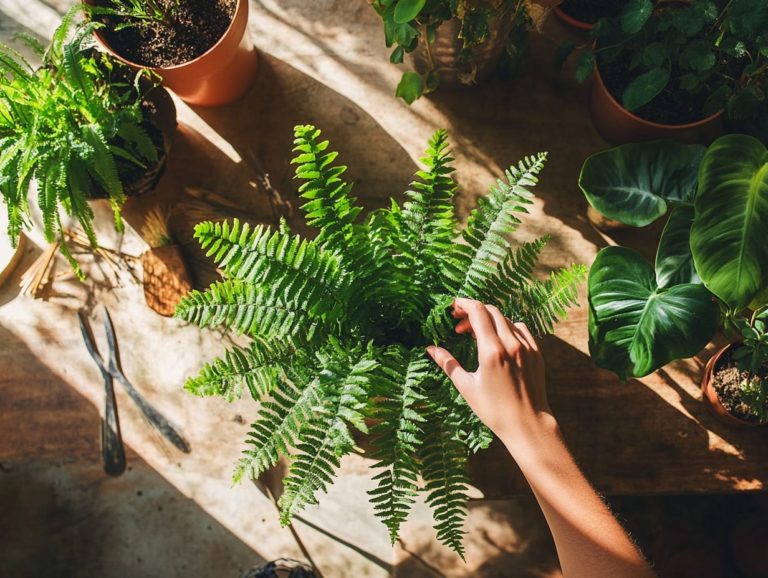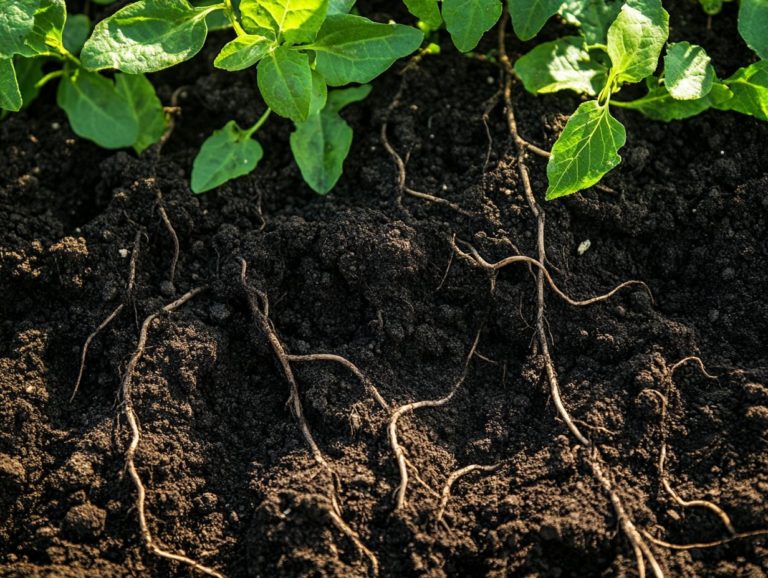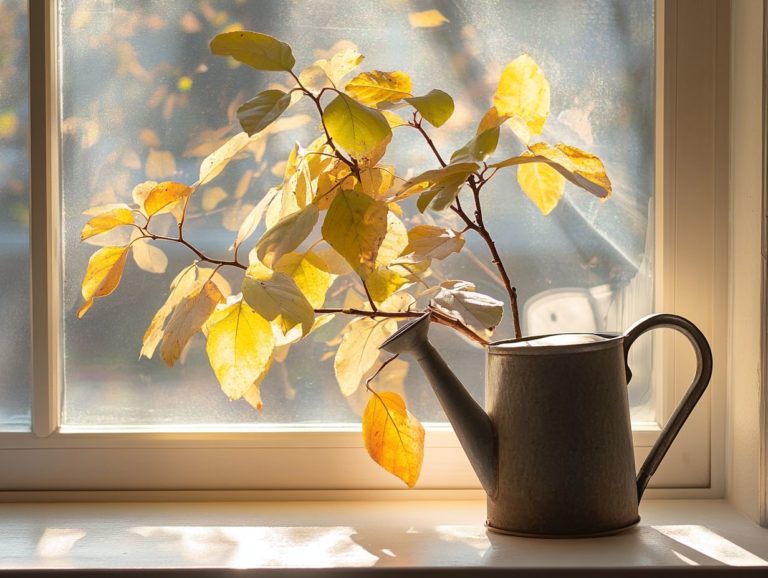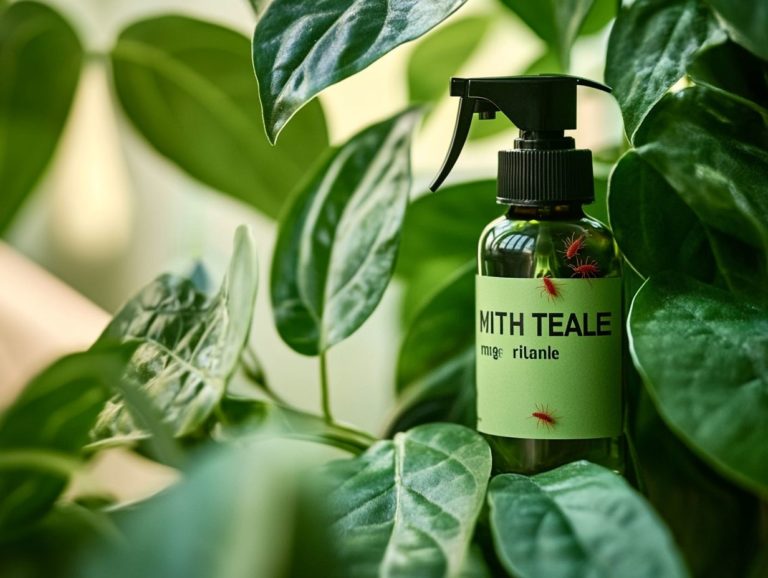5 Common Mistakes in Indoor Plant Care
Caring for indoor plants presents a delightful blend of rewards and challenges. Despite your best intentions, it s easy to fall into common traps that can stifle your plants’ growth and vitality. As a plant parent, understanding these challenges is crucial for your houseplant journey.
From the perils of overwatering to selecting unsuitable soil, these missteps can leave your greenery less than pleased. This article delves into five frequent pitfalls in indoor plant care, offering practical insights on how to navigate around them. You can avoid common errors and cultivate a flourishing indoor oasis that brings joy and life to your space, enriching your plant community.
Contents
- Key Takeaways:
- Overwatering
- Not Enough Light
- Not Providing Adequate Drainage
- 4. Not Pruning or Trimming Regularly
- 5. Using the Wrong Type of Soil
- How to Avoid These Common Mistakes
- What Are the Signs of Overwatering and How to Correct It?
- How Much Light Do Indoor Plants Need and How to Provide It?
- Why Is Drainage Important and How to Ensure Proper Drainage?
- How Often Should Indoor Plants Be Pruned or Trimmed and How to Do It?
- Want Your Indoor Plants to Thrive? Picking the Right Soil is Your Secret Weapon!
- Frequently Asked Questions
Key Takeaways:
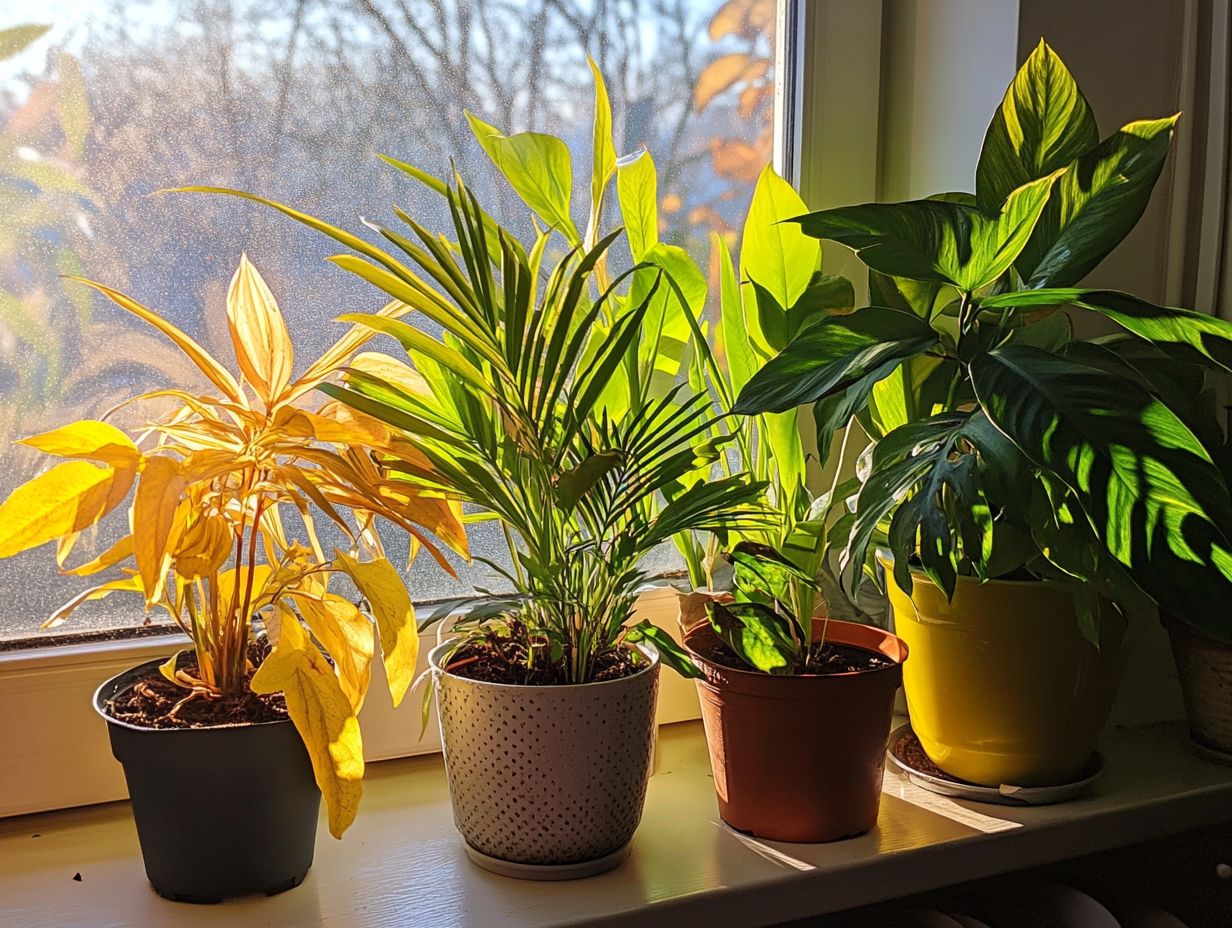
- Overwatering? Don t let your plants drown! Check for signs like yellowing leaves and adjust watering accordingly.
- Light is essential! Ensure your plants get enough light and consider using grow lights to boost photosynthesis.
- Proper drainage is crucial! Use pots with drainage holes and avoid overwatering to prevent root rot.
Overwatering
Overwatering is a common pitfall for houseplant enthusiasts and can lead to root rot, a condition where plant roots decay due to excessive moisture. This can severely compromise the health and growth of your beloved indoor plants.
This mistake stems from a misunderstanding of moisture levels and the specific water needs of different houseplants, such as tropical varieties like the Fiddle Leaf Fig and Alocasia. You might easily spot signs of overwatering: yellowing leaves and wilting stems. To debunk common misconceptions, check out the 5 watering myths about indoor plants. Each houseplant has its own moisture preferences; for example, succulents thrive in drier conditions, while ferns flourish in consistently damp soil.
To avoid overwatering, understand each plant s unique water requirements. Ensuring that your pots have proper drainage holes is essential for allowing excess water to escape. A quick tip: stick your finger an inch into the soil to gauge moisture levels, promoting healthier growth and more vibrant foliage!
Not Enough Light
Not providing adequate light conditions is a common misstep in indoor plant care. Many plants have specific ambient light or indirect light requirements essential for them to thrive and maintain their aesthetic charm.
Assess the light levels in various areas of your home and adjust them accordingly. For instance, succulents and cacti bask in bright, direct sunlight, making a south-facing window their ideal sanctuary. Conversely, ferns and snake plants prefer shadier spots and thrive in lower light conditions.
To ensure each plant receives the right amount of light, consider rotating them from time to time. If you have darker rooms, incorporating grow lights can be a game-changer. These lights simulate natural sunlight, helping your plants flourish even in less-than-ideal conditions!
Not Providing Adequate Drainage
Neglecting adequate drainage is a common misstep among houseplant enthusiasts. This often leads to overwatering and jeopardizes plant health due to poor soil conditions that hinder moisture control.
Ensuring your plant pots feature drainage holes is essential for nurturing vibrant indoor plants. This simple yet vital detail prevents root rot and promotes overall soil health by allowing excess water to escape.
When choosing pots, opt for those with multiple drainage holes and consider materials like terracotta that encourage evaporation. To boost drainage in your existing pots, a well-aerated soil mix containing perlite or pumice can significantly enhance water retention and airflow, providing your roots the optimal environment to thrive!
With these tips in mind, you can confidently navigate the world of indoor plant care. Embrace the journey and watch your plant community flourish!
4. Not Pruning or Trimming Regularly
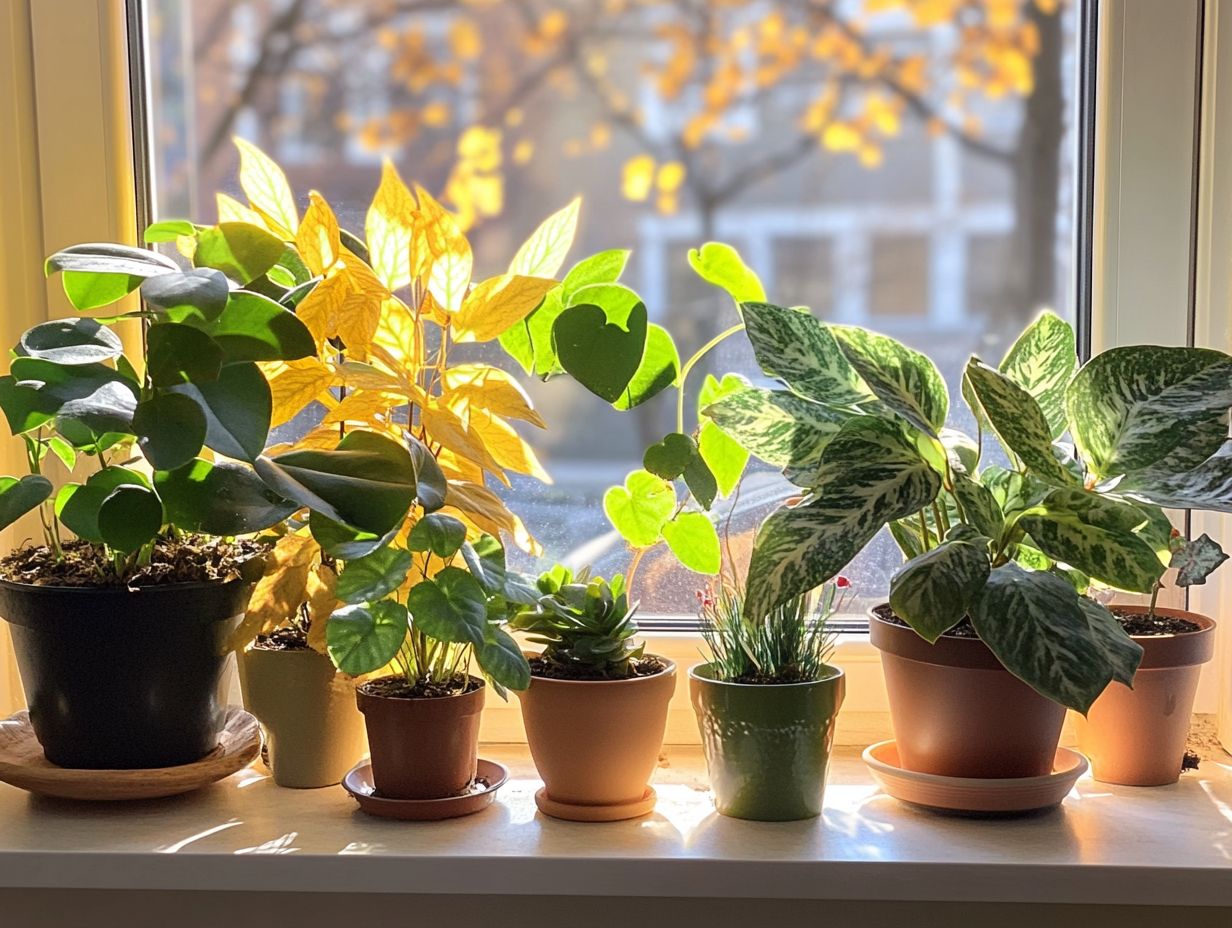
Neglecting regular pruning or trimming is a significant oversight. It can hinder growth and detract from the aesthetic appeal of your leafy companions.
By properly maintaining your plants through trimming, you encourage healthier growth. You’ll foster a thriving plant community!
Regular trimming is essential for a vibrant indoor garden. It removes dead or damaged leaves, allowing the plant to focus on new growth.
- Leafy species like pothos and spider plants thrive with monthly pruning.
- Flowering plants, like African violets, need less attention.
Using sharp, clean pruning shears is vital for making precise cuts that promote faster healing. Thinning out dense areas lets light penetrate, encouraging lush foliage.
5. Using the Wrong Type of Soil
Using the wrong type of soil can be a critical misstep for many houseplant enthusiasts. It impacts plant nutrition and overall health.
This often results in issues like a lack of nutrients and over-fertilization. Each type of indoor plant, whether it’s a tropical variety or a succulent, has unique soil needs that must be addressed for optimal growth.
It’s crucial to understand these differences. For example, succulents flourish in well-draining, sandy soils that prevent water retention. In contrast, tropical plants typically prefer a rich, organic mix that retains moisture.
The right soil not only supplies essential nutrients but also mimics the plant’s native habitat, enhancing its resilience. When selecting soil, consider factors like pH levels (which measure how acidic or alkaline the soil is) and texture, as these can significantly affect water drainage and nutrient availability.
Being knowledgeable about your plant s specific requirements allows for a more thoughtful approach. This transforms your indoor gardening experience into a nurturing environment fully tailored to its inhabitants.
How to Avoid These Common Mistakes
Avoiding common mistakes in houseplant care is crucial for your journey as a plant parent. It requires a blend of knowledge, hands-on practice, and active engagement with the plant community.
By familiarizing yourself with typical pitfalls related to watering, lighting, drainage, pruning, and soil selection, you can elevate your gardening experience and cultivate a thriving indoor plant collection.
To ensure your plants flourish, pay close attention to their unique watering needs. Overwatering is a frequent trap you ll want to sidestep!
Adjusting the light conditions to suit the specific requirements of each plant species will help you avoid issues like sunburn or leggy growth. Choosing pots with proper drainage can effectively prevent root rot. Additionally, being aware of the top 7 mistakes in watering indoor plants will ensure healthier, more robust plants.
Selecting the right soil mix is vital for providing necessary nutrients and ensuring adequate drainage. Engaging with social media influencers like Rachel Tenney and Kevin Espiritu can offer you valuable insights. Joining local plant communities or visiting botanical gardens will inspire and support your ongoing learning and networking in the plant world!
What Are the Signs of Overwatering and How to Correct It?
Look for signs of overwatering to keep your indoor plants healthy. Yellowing leaves and soggy soil mean it s time to change your watering routine. Early intervention can prevent root rot and other harmful conditions.
Keep an eye out for visual indicators like wilting. A foul odor from the soil can also indicate excessive moisture, suggesting that air circulation around the roots may be compromised.
To tackle overwatering, adjust your watering schedule based on seasonal changes and each plant’s specific needs. Implement improved drainage systems such as using pots with small openings at the bottom that let excess water out or mixing perlite with your potting soil to enhance aeration.
By learning the specific water requirements of each plant type, you ll be enabled to create an optimal environment, ensuring robust growth and lasting beauty.
How Much Light Do Indoor Plants Need and How to Provide It?
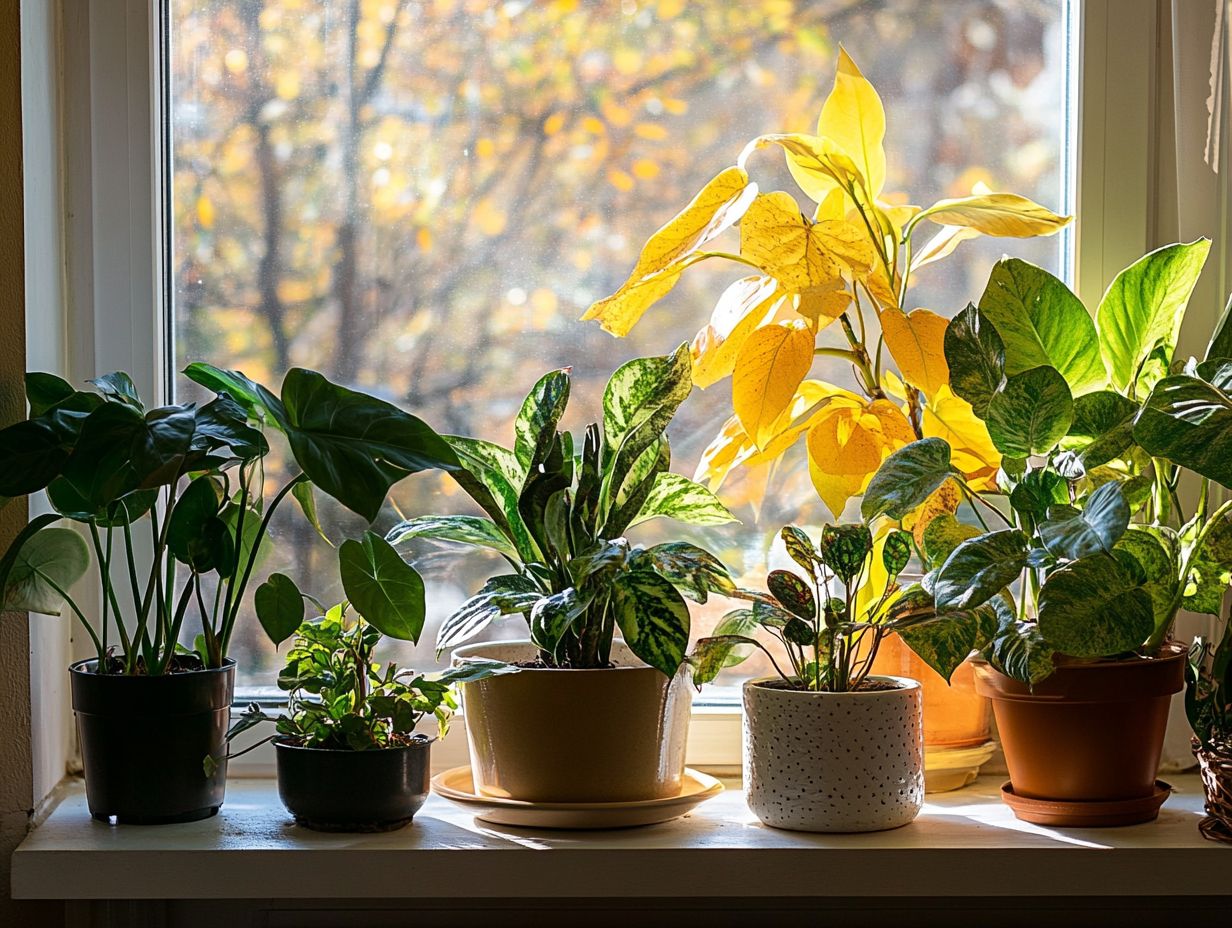
Understanding how much light your indoor plants need is crucial for their growth. Different species thrive under varying light conditions, ranging from bright indirect light to low-light environments.
Providing the right amount of light enhances growth and ensures that your plants maintain their vibrant appearance. Assess the light levels in your home by identifying the brightest spots, often near south-facing windows.
Plants like succulents or cacti may thrive there. Conversely, areas with minimal natural light are suited for shade-loving species such as snake plants or pothos. Position your plants wisely and rotate them occasionally to promote even growth.
If natural light falls short, consider using grow lights artificial lights that help plants grow indoors when sunlight is not enough as a supplemental option. This ensures they receive the adequate light energy required for the process plants use to turn sunlight into energy and overall health.
Why Is Drainage Important and How to Ensure Proper Drainage?
Proper drainage is essential for the health of your indoor plants. It prevents water from accumulating and causing root rot and other detrimental soil conditions.
Ensure your pots have drainage holes and are filled with the right soil mix to maintain optimal moisture levels. Incorporate materials like perlite or coarse sand into the soil to enhance drainage, allowing excess water to escape and air to circulate around the roots.
When choosing pots, look for those that feature drainage holes and have a slightly elevated base to encourage water flow away from the soil. Before potting, layer small stones or gravel at the bottom as a barrier to prevent soil from clogging the holes.
Regularly monitor moisture levels and adjust your watering frequency based on seasonal changes to ensure your plants thrive in their environment.
How Often Should Indoor Plants Be Pruned or Trimmed and How to Do It?
Knowing how often to prune or trim your indoor plants is essential for maintaining their health and encouraging optimal growth. Many plants benefit from regular maintenance throughout the growing season.
Understanding the specific needs of each variety is crucial. Some indoor plants thrive with a light trim every month, while others may need more intensive cuts a few times a year.
For instance, flowering plants often require periodic pruning after blooming to encourage new growth, while foliage plants typically need thinning to prevent overcrowding.
Having sharp, clean scissors or pruning shears is fundamental for precise cuts, minimizing damage to your plants. Keep an eye out for yellowing leaves or leggy growth; act quickly if you notice these signs to maintain a vibrant and lush indoor garden.
Want Your Indoor Plants to Thrive? Picking the Right Soil is Your Secret Weapon!
Choosing the right type of soil is essential for the success of your indoor plants. Different species have varying soil preferences that directly influence their growth and overall health. Tropical plants, for instance, thrive in a well-draining mix, while others may require denser soil to ensure optimal nutrition.
Understanding these nuances is key when selecting the right medium. Succulents and cacti flourish in a gritty mix that allows excess water to drain away quickly, preventing root rot. In contrast, ferns prefer soil that holds moisture, providing the humidity they crave.
When choosing the appropriate soil, consider factors such as pH levels and nutrient content. Make sure your selected mix aligns with the specific needs of each plant. Testing the soil can give you valuable insights into whether any adjustments are necessary, ultimately enhancing the wellbeing of your green companions.
Frequently Asked Questions
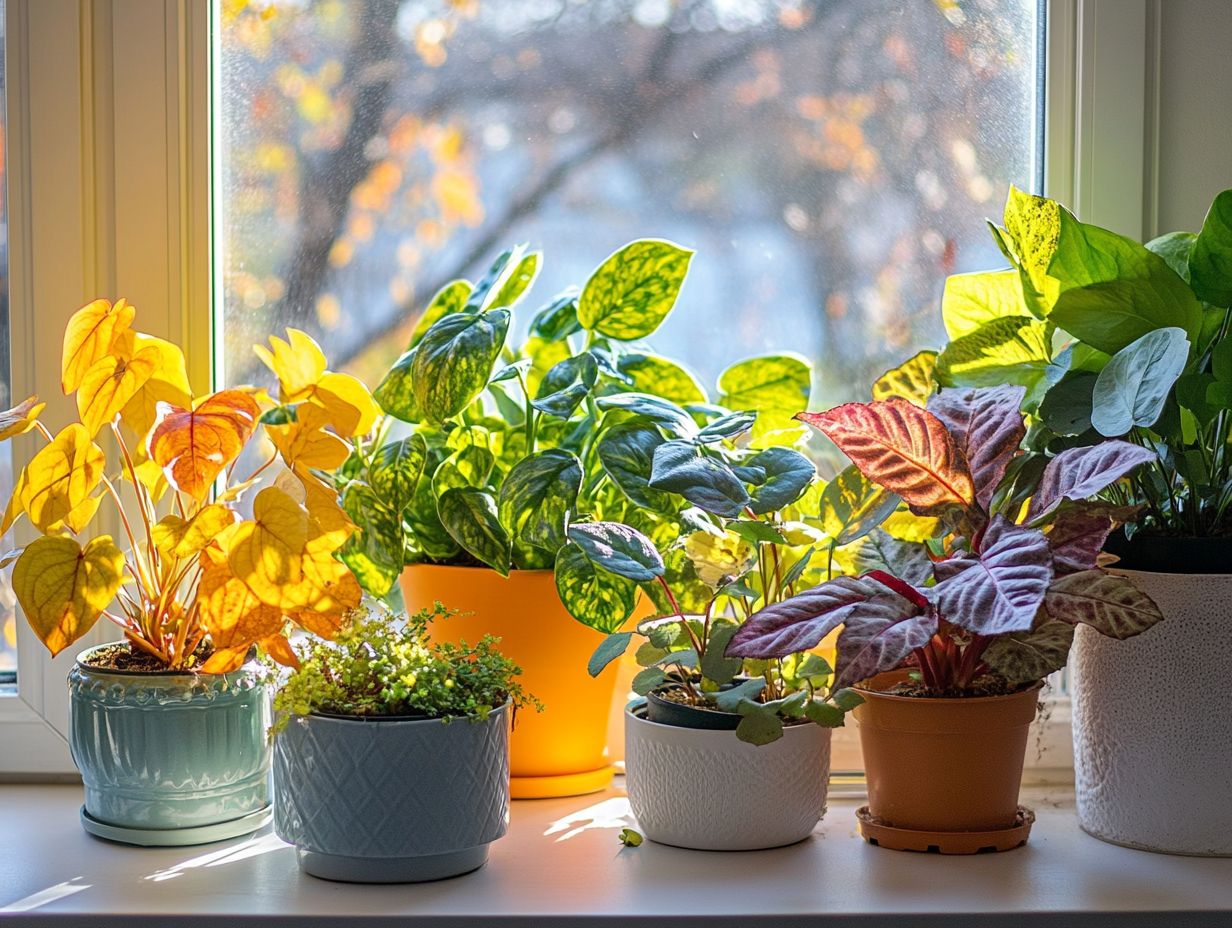
What are the 5 common mistakes in indoor plant care?
The 5 common mistakes in indoor plant care are overwatering, underwatering, lack of proper lighting, using the wrong type of soil, and not providing enough drainage for the plant.
How often should I water my indoor plants?
The frequency of watering your indoor plants depends on various factors such as the type of plant, size of the pot, and the environment it is placed in. Generally, plants should be watered when the top inch of soil is dry.
What are the signs of overwatering my indoor plants?
Signs of overwatering include yellowing leaves, wilting, and mold or fungus growth on the soil. If left unchecked, overwatering can lead to root rot and ultimately kill the plant.
Can I use regular garden soil for my indoor plants?
No, regular garden soil is often too dense and compact for indoor plants. It can also contain pests and diseases that can harm your plants. It’s best to use a well-draining potting mix specifically designed for indoor plants.
How can I improve the lighting for my indoor plants?
If your plants are not getting enough natural light, you can supplement with artificial lighting. LED grow lights are a great option for indoor plants as they provide the full spectrum of light needed for healthy growth.
Why is drainage important for indoor plant care?
Drainage is crucial for indoor plant care as it prevents water from accumulating at the bottom of the pot, which can lead to root rot. Ensure your pots have drainage holes and use a well-draining potting mix to allow excess water to flow out.
Don’t wait! Make sure your plants get the best soil for their health today! Explore more about plant care, and share your experiences with your indoor plants!


